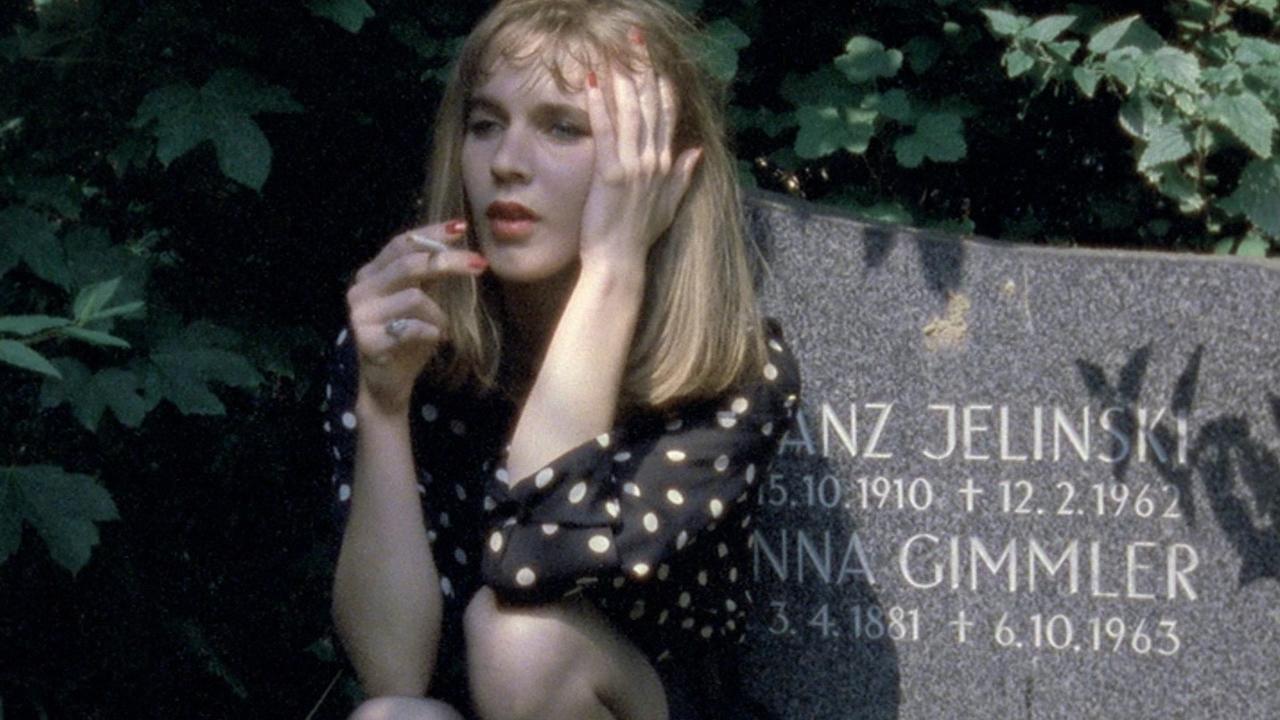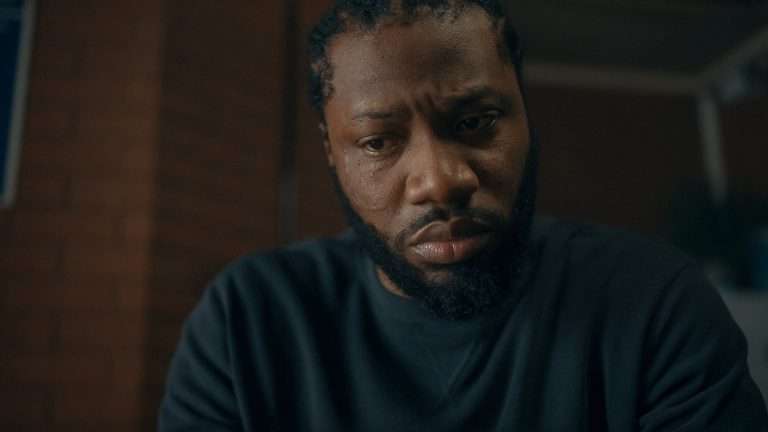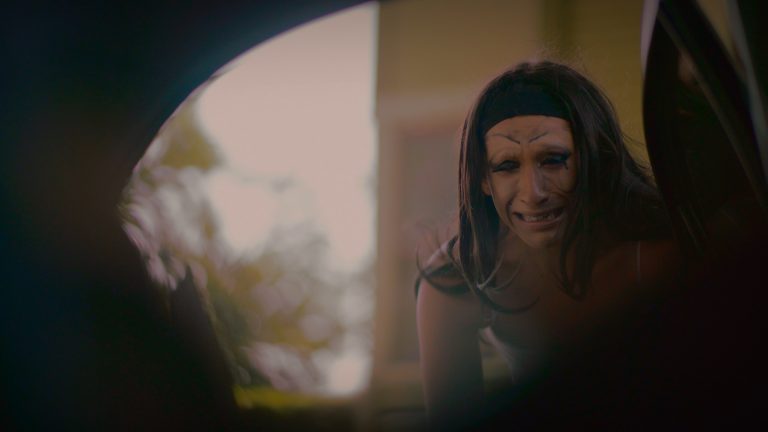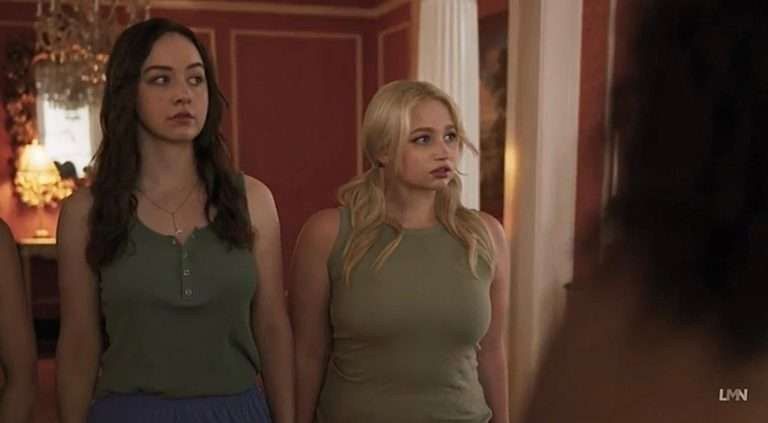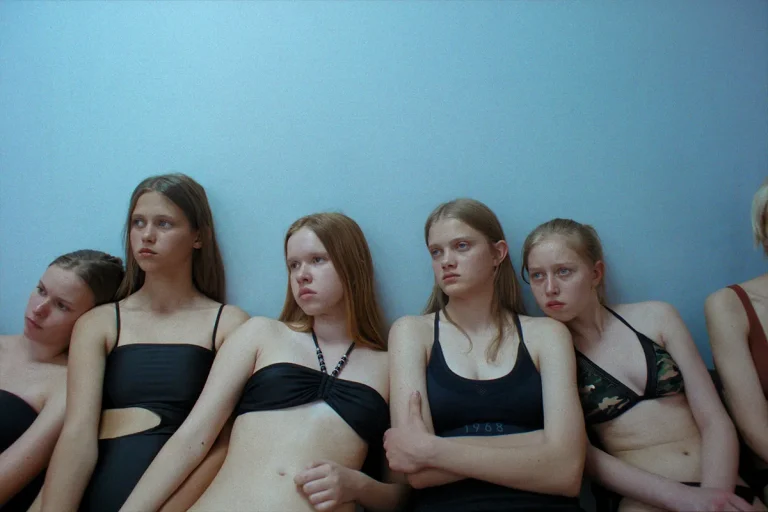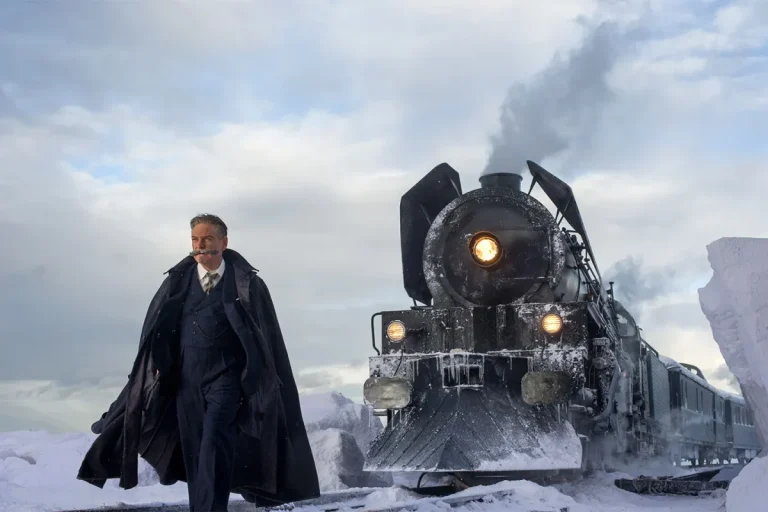Released in 1991—three years after its infamous prequel, Nekromantik 2: The Return of The Loving Dead surpassed its predecessor in every other way. Whether it be due to the gratuitous gore, the nudity, or the radical feminist politics, director Jörg Buttgereit’s sequel gained instant notoriety when the Munich police authorities banned it.
As I stated in my analysis of Nekromantik (1988), the infamous history of both films has actually shadowed the radical polemic of these rather insightful features. Just like Cannibal Holocaust (1980) is chiefly known for its depiction of animal violence (which being a vegan, I don’t condone at all) than for its anti-imperialistic stances. Similarly, the Nekromantik films are remembered more for their depiction of the transgressive titular practice than their actual content.
However, just like Nekromantik, its sequel, The Return of The Loving Dead (a tongue-in-cheek reference to the 1985 zombie feature The Return of The Living Dead), is an extremely insightful depiction of desires and transgression in a hypocritical society that values normativity. In fact, Nekromantik 2 surpasses the original film in several aspects, especially on the thematic front.
Before I dwell on the ending of the film and its themes, I wish to specify that Nekromantik 2 is best viewed after watching its predecessor. Even though these cinematic texts feature different protagonists, the thematic undercurrent in both of them seems to be in conversation with one another.
Without further ado, let’s dive into Nekromantik 2!
Nekromantik 2 (1991) Plot Summary and Movie Synopsis:
The film begins with a quote from one of the most notorious necrophiles on the planet—the serial killer Ted Bundy. “I want to master life and death,” Bundy’s statement opens the film. Before the narrative commences, we are shown the final sequence from the prequel. In the scene, the protagonist of the first film, Rob (Bernd Daktari Lorenz), stabs himself to death as he ejaculates—this footage is played in black and white before slowly fading into color.
As the film opens, Rob’s corpse is buried at the local cemetery. We follow our protagonist Monika (portrayed by Monika M.) as she breaks into the graveyard and begins to dig inside Rob’s burial site—an image hinted at in the last shot of the first film. After serious effort, Monika successfully manages to dig six feet under and get hold of Rob’s decaying corpse. She gets it to her apartment and begins kissing, caressing, and undressing Rob’s dead body. A clipping hints that Monika had read about Rob’s suicide in the newspapers.
During the sexual encounter, Monika is initially turned on by the corpse but is soon repulsed and ends up throwing up in the washroom. This sequence of Monika’s necrophiliac act is intercut with Mark (essayed by Mark Reeder), another important character in the narrative. It is revealed that Mark works as a voice-over artist for pornographic films—emitting moaning sounds and lustful dialogues to accompany the pornography.
The next scene again brings us back to the graveyard, where Betty (Beatrice Manowski), Rob’s girlfriend from the previous film, is standing. It is inferred that Betty was at the cemetery to retrieve Rob’s corpse to satiate her necrophiliac cravings but is disappointed to see the corpse already stolen from the grave. Betty is never again seen or mentioned in the film.
The following day, Monika cleans up Rob’s body and neatly places it on a table, decorating it with two flower vases. She then proceeds to dress up the corpse and even takes a photograph with it—treating it as her romantic partner. While Monika is busy with her new-found love, Mark sets up a date with one of his female friends for a film.
In the evening, Mark stands outside the theatre, patiently waiting for his friend to turn up for the film, but she is late. Tired of waiting, Mark offers his ticket to Monika, who is also there to see the film. As they watch the movie, Mark is infatuated with Monika. After the screening, Mark takes Monika to his apartment, where he cooks her eggs. During their conversation, Monika says that she works as a nurse, and Mark, too, honestly reveals his profession as a dubber for pornographic films.
Following this, we get an extended sequence showing the budding relationship between the two. After a blissful day with Mark, Monika begins to rethink her morbid obsession with the dead.
Donning an apron and gloves, she places Rob’s corpse in the bathtub. Initially reluctant to ‘kill’ her dead lover, Monika decides to privilege her normative relationship with Mark and proceeds to chop off the corpse. In a gruesome (and rather heartfelt?) sequence, Monika sobbingly cuts Rob’s body (hands, legs, and even his penis!) and decapitates him.
She dumps everything in trash bags but, on second thought, decides to keep Rob’s head and penis—storing the latter in her refrigerator. Monika then puts the trash bags containing other remains back into Rob’s grave.
Having dumped her morbid past, Monika invites Mark into her apartment and shows her the family album. To Mark’s surprise, most of the images in the album are of the burials of Monika’s family members. After glancing through the photographs, Monika and Mark proceed to have sex—Mark visibly takes a more dominating role in the process.
Monika does not seem to be enjoying the act and proceeds to move on top of Mark. Monika imagines the corpse’s face instead of Mark’s as she straddles him. The sexual act leaves her seemingly unfulfilled, although Mark achieves an orgasm. Mark spends the night at Monika’s place, and he gets up early in the morning.
As he is preparing a surprise breakfast at the apartment, Mark finds the corpse’s penis in the refrigerator. Although confounded by the discovery, he does not confront Monika about it. However, when Monika clicks a photograph of Mike naked and tied upside down, he begins to harbor some doubts about his new girlfriend.
Mark meets up with his female friend at a café and confides to her about Monika’s perversions. The friend treats this in jest, mentioning how Rob being a voice-over artist for pornographic films, should think twice before calling anyone else perverted. After this meeting, a depressed Mark gets drunk at the club and passes out. He then has a dream where he is buried in the ground with only his face above the surface.
In this surreal vision, Mark is screaming for help as Monika passes by. Yet, Monika chooses to ignore his cries and proceeds to kiss a dead man’s head. She then proceeds to cover Mark’s head with a box and brutally stamp it with her feet. Before this violent dream can escalate further, the bar owner wakes up Mark.
Back at her apartment, Monika is with some of her female friends (who seem to have an affinity for necrophilia as well) and shows them the severed head from Rob’s corpse. She and her friends then watch a graphic video of a dead seal being dissected in a lab. This nonchalant viewing of the graphic tape is interrupted by Mark, who shows up unannounced at Monika’s apartment with a pizza and an adult videotape to see with her. Monika’s friends take the cue and leave.
Mark asks Monika to play the video that she and her friends were watching. Monika hesitates momentarily but lets the video of the seal dissection on. The disturbing footage horrifies Mark, and he asks Monika to stop the tape. Tired of her eccentric desires, Mark confronts Monika telling her that it is perverse to watch this kind of material.
Monika, however, does not feel ashamed and faces up to Mark, telling him that she finds such things interesting and that everybody has their own turn-ons. She further mentions that the stuff she watches is anyway less perverse than the vulgar, pornographic films that Mark dubs. After their argument, Mark leaves Monika’s apartment.
Later, Monika calls Mark and promises to explain her fascination with corpses to him. She asks him to visit her the following evening. After this, Monika takes a stroll at the beach, contemplating her life choices. When she returns, she looks at the various photographs she had taken with both Mark as well as the corpse—still conflicted between her two lovers.
The following evening Mark visits Monika, and the two have sex—with Mark being on top, although Monika soon takes charge. She takes control of Mark’s hand—making his body almost immobile, like a corpse. As Mark is climaxing, Monika suddenly pulls out a butcher knife from under the bed and violently decapitates Mark. She then replaces it with Rob’s head and continues to have sex with Mark’s remaining corpse—finally able to achieve her orgasm.
In the final scene, Monika visits a hospital where a doctor congratulates her on her pregnancy—implying that Monika had managed to inseminate herself with Mark’s corpse.
Nekromantik 2 (1991) Themes Analysed:
Individualism Vs. Conformity
One of the main themes in Nekromantik 2 is Monika’s dilemma between choosing a normative relationship with Mark or pursuing her innate lust for corpses. Since human society only validates the former and treats an aberration like necrophilia as horrific, Monika is pressured into rethinking her desires when she meets Mark.
After a pleasant evening with Mark, Monika decides to purge herself of her passions by butchering Rob’s corpse, which she had so lovingly taken care of until now. But despite wanting to live a normative romantic life, Monika is unable to let go of the corpse entirely. She decides to keep its head and penis—symbolic of her attachment to her necrophiliac desires. When Monika and Mark pursue a sexual relationship, she again feels unfulfilled and often imagines a corpse’s head in place of Mark.
Even though Mark is nice and ‘normal,’ he is unable to satiate Monika’s deeper sexual cravings. After a bitter argument with Mark, Monika begins to rethink her future with him, which implies adhering to standard societal norms and suppressing her innermost desires. Through her character—the film dwells on this dichotomy of retaining one’s individualism or losing it to subscribe to the dominant paradigm.
However, towards the end of the film, Monika decides to privilege her individuality and ends up killing Mark—using his corpse (and Rob’s) to attain sexual fulfillment. While the first film had a punitive approach to necrophilia, where our protagonist ends up committing suicide due to his aberrant desires, Nekromantik 2 sees the necrophile fulfilling her fantasy even though it involves killing her boyfriend.
In his essay, “The State vs. Buttgereit and Ittenbach: Censorship and Subversion in German No-Budget Horror Film,” film scholar Kai-Uwe Werbeck notes how by impregnating herself with a decapitated Mark (with Rob’s head), Monika manages to create a hybrid creature existing between life and death—as evident by her pregnancy. Like Bundy’s quote at the beginning of the film about mastering life and death, Monika manages to achieve this dominance over the liminal space of life and death, even if it is for a short period.
Female Necrophilia and Dominance
Even though the first film featured Betty, Rob’s girlfriend, as having necrophiliac tendencies, it was still a male-centered portrayal primarily concerned with its male protagonist. Nekromantik 2, however, concerns itself entirely with Monika. This gender reversal, however, has important implications for the politics of the text. In her thought-provoking essay on the two Nekromantik films, Anna Chiara Corradino mentions how, conventionally, necrophilia is considered a male mental aberration.
This is primarily because of the conventional view of women as passive and men as active subjects during sexual encounters. Since male necrophiles view a corpse as replicating the passive and unresistant female (the fact that the dead body cannot move and unwillingly complies with any sexual act performed on it) —this practice compliments the sexist understanding of the copulatory act. Corradino mentions that a female necrophile challenges such a sexist understanding—as it subverts the submissive woman/active man binary prevalent in the culture.
In Nekromantik 2, Monika prefers to be dominant while having sex with Mark, even though her behavior bothers him. Only the corpse of Rob can comply with her dominant behavior, and this is the reason Monika chooses the dead body over Mark—valuing her sexual fulfillment above anything else. By presenting an active female subject, the film challenges the gendered binary in the understanding of necrophilia.
This is, however, not without its problems. Corradino mentions that the film by positing Monika as a violent murderer, represents dominant women as dangerous to men, as evident in the femme fatale trope. In both the Nekromantik films, the men have to die to appease their dominant partner.
Just like film noir, the film can also be read as signaling male fears of feminism. Despite this, Nekromantik 2 does not offer any moral judgment on Monika’s action. If anything, the film ends on a triumphant note for Monika, who is visibly overjoyed at the prospect of being impregnated by a corpse.
Like its predecessor, Nekromantik 2 is chiefly remembered for its exploitative premise. However, if we move past this sensationalism and dig a bit deeper, it is easy to discern that director Jörg Buttgereit’s philosophical treatment of themes like censorship, conformity, sexuality, and violence is as profound as other revered European art films of the time.



